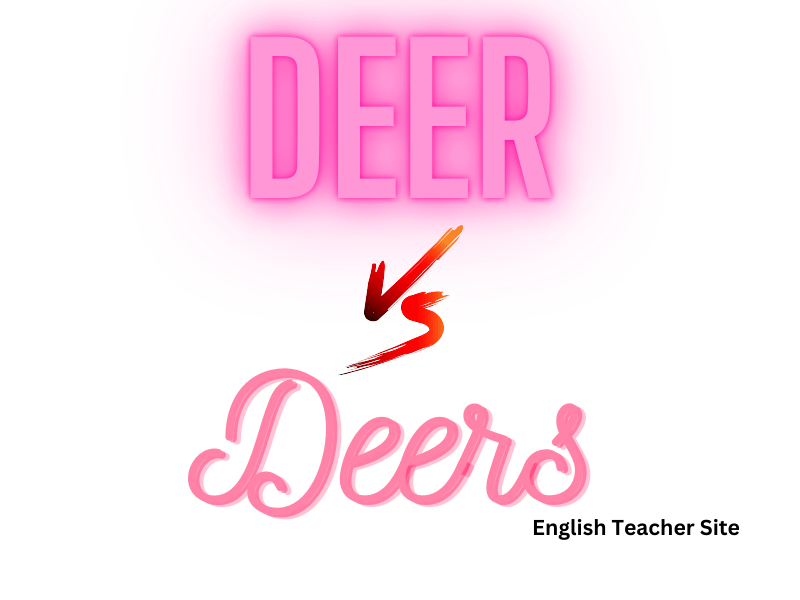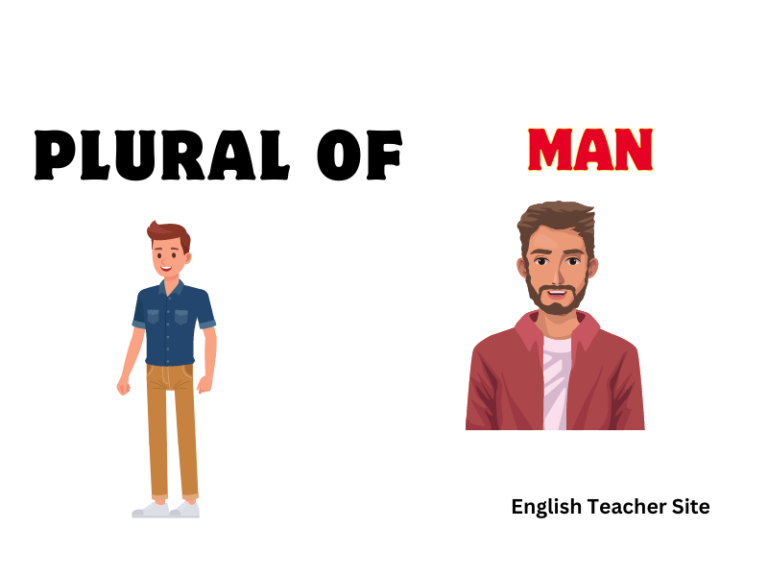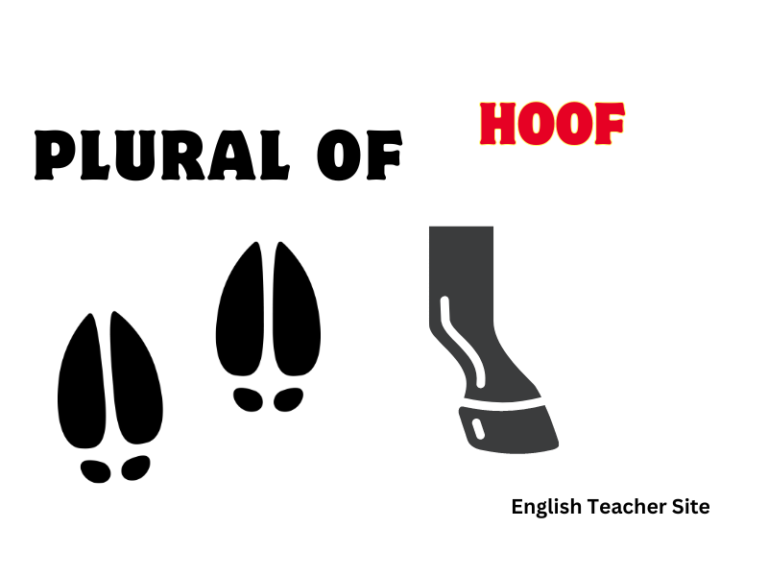What is the plural of deer: Understanding Singular and Plural Nouns in English

- The plural of ‘deer’ remains ‘deer’ without modification.
- Consistency applies to ‘deer’ when used both in singular and plural contexts.
- The term ‘deer’ is inclusive of various species, including elk and moose.
The simplicity of the plural form of ‘deer’ might cause confusion, as one may expect to add an ‘s’ or ‘es’ to create the plural, as is common with many other English nouns. However, similar to other wild animals like ‘sheep’ or ‘fish’, the word ‘deer’ does not vary between its singular and plural usage. Whether discussing a single animal or a herd roaming the forests, ‘deer’ consistently refers to the animal. This linguistic nuance extends to these animals, whether encountered in the wild, in literary works, or even when discussing different species within the deer family, such as elk or moose.
What Is the Plural of Deer: Deer or Deers?
When it comes to understanding English grammar, the pluralization of certain words can often be a source of confusion. This is particularly true for the word “deer,” where both singular and plural forms are identical.
Correct Use:
- Singular: One deer stands in the clearing.
- Plural: A herd of deer grazes in the meadow.
The word “deer” falls into a category of irregular nouns that do not follow the standard pluralization rule of adding an ‘s’ or ‘es’ at the end. Similar to “sheep” and “fish,” the word “deer” remains the same whether referring to a single individual or many.
The usage of “deers” is considered nonstandard in modern English. While historical texts might have instances where “deers” was used, in contemporary English, this form is generally not accepted by style guides and dictionaries.
Incorrect Use:
- I saw many deers on my walk. (Nonstandard)
Educational and literary resources emphasize that “deer” should be used for both singular and plural contexts. Therefore, when referring to more than one of these animals, the word deer remains constant, with no change to its ending.
Deer: Singular & Plural
When discussing the word “deer,” understanding its usage in both singular and plural forms is crucial, as it defies the regular conventions of pluralization in the English language.
Identifying Forms in Singular and Plural
The term “deer” serves as both the singular and plural form of the noun. It is consistent across its uses, whether referring to one individual animal or a group. For instance:
- Singular: The observer spotted a deer by the lake.
- Plural: The hiker saw a herd of deer grazing in the meadow.
What Are “Deer”? Are They the Same as “Elk” or “Moose”?
Deer, elk, and moose are distinct species within the same family but have notable differences. Understanding these can enrich one’s knowledge of wildlife.
Clarifying Animal Terminology
- Deer: The term “deer” refers to a group of large mammals known for their graceful stature and antlers, which are typically found on males. The plural of deer remains “deer,” with “deers” considered incorrect in standard English.
- Elk: While “elk” is part of the deer family, they are a separate species. In Europe, the word “elk” refers to what North Americans call “moose,” contributing to some confusion. In North America, “elk” refers to a species also known as wapiti (Cervus canadensis), which is characterized by larger size and distinct antlers compared to other deer.
- Moose: The moose is the largest species in the deer family and is known for its massive antlers and sturdy body. It is distinct from both deer and elk, with the term “moose” being both singular and plural.
For more clarity, here are some attributes to differentiate the three:
| Attribute | Deer | Elk | Moose |
|---|---|---|---|
| Size | Smaller compared to elk and moose | Larger than deer, smaller than moose | Largest of the family |
| Antlers | Size and shape vary greatly | Large and rounded with multiple points | Massive and palmate (broad and flat) |
| Habitat | Widespread, adapts to various environments | Prefer forests and mountainous regions | Favor colder climates and forested wetlands |
In essence, while deer, elk, and moose belong to the same family (Cervidae), they exhibit distinct physical characteristics and behaviors that set them apart from one another.
Examples of Sentences Using “Deer” (as a Plural)
The word “deer” serves as both the singular and plural form. When referring to more than one of these animals, “deer” remains unchanged, avoiding the use of “deers.”
Illustrating Plural Usage
- In Context: A group of deer grazed in the meadow.
- Observations: She noted that several deer had gathered by the forest’s edge at dusk.
The sentences above demonstrate how the term “deer” is used to denote multiple animals without altering its form.
Group Names & Gender Names for Deer
When discussing deer in the English language, it is important to understand the proper terminology for their groupings and gender distinctions. Here is a breakdown to clarify these terms:
Group Names:
- A group of deer is commonly referred to as a herd.
- In specific contexts, you may also hear the term bevy used, although it is less common.
Gender Names:
- Male deer are known as bucks, stags, or bulls, depending on the species and region.
- Female deer are referred to as does or hinds.
- Young deer are called fawns or calves.
Here’s a quick reference table:
| Gender | Common Names |
|---|---|
| Male | Buck, Stag, Bull |
| Female | Doe, Hind |
| Young | Fawn, Calf |
In terms of pluralization, the word “deer” serves as both singular and plural. Therefore, one may see a single buck or a herd of deer.
Examples of the Word “Deer” in the Media
In media reporting and storytelling, the word “deer” frequently appears to maintain linguistic accuracy and adhere to the conventional pluralization rules of English.
Showcasing Usage in Media
- News Reports: Journalists consistently use “deer” when referring to multiple animals of this species in written articles and televised segments. An example is when describing wildlife populations or reporting on environmental issues.
Example: “Wildlife officials noted an increase in the deer population in the region.”
- Documentaries: Wildlife documentaries, such as those on National Geographic or the BBC, apply the correct plural form of “deer” when narrating scenes that feature herds grazing or migrating.
Example: “The herd of deer moves across the plains in search of food.”
Origin of the Word “Deer”
The word “deer” can be traced back to Old English where it was spelled “dēor”. Originally, it referred not just to the animal known today as deer, but to any wild animal or beast. This term was much broader in ancient times, encompassing creatures that were not domesticated.
In linguistics, the progression of the term “deer” showcases an interesting feature of language evolution. It comes from the Proto-Germanic diuraz, which is also linked to the Old High German tior and the Gothic dius, both similar in meaning. The singular and plural forms being the same reflects this historical linguistic path, where the neuter declension did not have a distinct plural ending in some cases.
Deer belongs to a category of nouns in English that have the same form in both singular and plural. This pattern is seen in several other animal names such as “sheep” and “fish”, depending on context. Over time, “deer” specifically narrowed to describe the ruminant mammals characteristic for their antlers and graceful stature.
| Old English | Proto-Germanic | Old High German | Modern English |
|---|---|---|---|
| dēor | diuraz | tior | deer |
One can see a clear linguistic path from ancient etymological roots to the contemporary term. The term embodies linguistic simplicity, as both “deer” singular and “deer” plural retain the essential meaning, with no addition required for plurality. The modern usage has held fast to this ancient grammatical structure.
Source
My name is Khamis Maiouf. I am the creator of the English Teacher Site, dedicated to providing valuable resources and insights for students around the world. With a passion for education and a commitment to helping students enhance their skills, I aim to make English teaching more effective and enjoyable for both educators and students.






